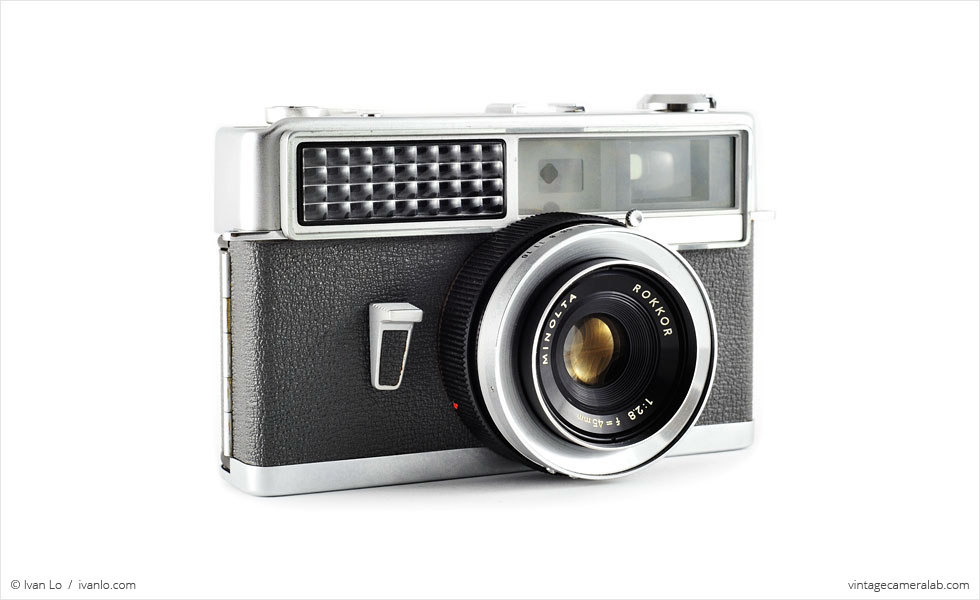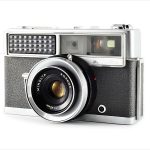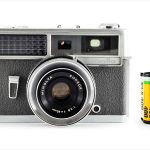Minolta Hi-Matic Specifications
| Manufacturer: | Minolta Camera K.K. |
| Origin: | Japan |
| Made in: | Japan |
| Introduced: | 1962 |
| Type: | Rangefinder |
| Format: | 135 Film |
| Dimensions: | 13.8 x 8.8 x 7.7 cm |
Minolta Hi-Matic Overview
The original Minolta Hi-Matic is one of the first mainstream fixed-lens rangefinders and the first Minolta to feature automatic exposure. The Hi-Matic was also rebadged and sold in the United States as the Ansco Autoset and gained some notoriety after American astronaut John Glenn purchased one at a local drug store shortly before embarking on the Mercury-Atlas 6 space mission. Although there were other cameras on the Friendship 7 spacecraft, Glenn burned through five rolls of film with his new camera while on board, shooting many historical images including this photograph of the earth.
The Hi-Matic uses a 45mm f/2.8 Rokkor lens with a minimum focus distance of three feet. The camera is compatible with ISO 6 to 1600 films and the shutter assembly—which, strangely, was made by Citizen, a company better know for their wristwatches—is capable of speeds ranging from 1/45 to 1/500 seconds. One of the quirkier features on this camera is the physical separation of the cable release socket (located on the top panel next to the film advance lever) and the shutter button (located next to the lens on the front).
Minolta produced a dozen or so different cameras in this series from the early ’60s to the early ’70s including the Hi-Matic G, which I also own. This original Hi-Matic, however, was the first vintage camera I ever purchased and while I don’t remember exactly how much I paid when I bought it on eBay, it couldn’t have been much because I was a poor college student at the time.
Find your very own Minolta Hi-Matic on eBay.
McKeown, James M. and Joan C. McKeown’s Price Guide to Antique and Classic Cameras, 2001-2002. (Grantsburg, WI, USA: Centennial Photo Service, 2001), p 49, 466.
“Another Journey for John Glenn’s Ansco Camera,” Smithsonian National Air and Space Museum, https://airandspace.si.edu/stories/editorial/another-journey-john-glenn’s-ansco-camera

















